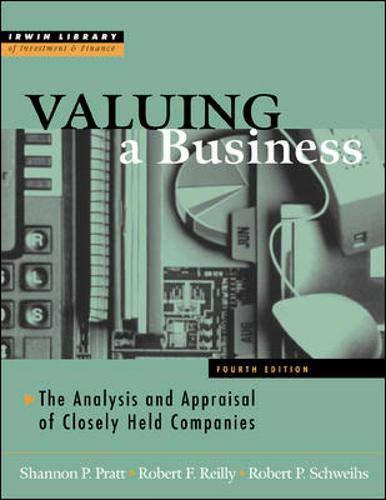Question
FIN 470 Assignment #9 1. Nearby Bank has the following balance sheet (in millions): Assets Cash $325 5-year Treasury notes 30-year mortgages Total assets Liabilities
FIN 470 Assignment #9
1. Nearby Bank has the following balance sheet (in millions):
Assets Cash $325
5-year Treasury notes 30-year mortgages Total assets
Liabilities and Equity
Demand deposits $200 125 12-year certificates of deposit 200 50 Equity 100 $500 Total liabilities and equity $500
What is the maturity gap for Nearby Bank? Is Nearby Bank more exposed to an increase or decrease in interest rates? Explain why (i.e. is the bank short funded or long funded)?
2. A bank has the following balance sheet:
Assets Rate sensitive Fixed rate Nonearning
Total
$175,000 955,000 665,000
$1,795,000
Avg. Rate 7.75%
8.75
Liabilities/Equity Rate sensitive Fixed rate Nonpaying
$525,000 305,000 965,000
Avg. Rate 6.25%
7.50
Total
$1,795,000
Suppose interest rates fall such that the average yield on rate-sensitive assets decreases by 50 basis points and the average yield on rate-sensitive liabilities decreases by 35 basis points.
a) Calculate the banks repricing GAP (CGAP), gap to total assets and gap ratio. b) Assuming the bank does not change the composition of its balance sheet, calculate the
resulting change in the banks interest income, interest expense, and net interest income. c) Explain how the CGAP and spread effects influenced this change in net interest income.
-
What is a maturity gap? How can the maturity model be used to immunize (hedge) an FIs portfolio?
-
A bank has the following balance sheet:
Assets Rate sensitive Fixed rate Nonearning
Total
$975,000 325,000 200,000
$1,500,000
Avg. Rate 7.75%
8.75
Liabilities/Equity Rate sensitive Fixed rate Nonpaying
$500,000 700,000 300,000
Avg. Rate 6.25%
7.50
Total
$1,500,000
Suppose interest rates rise such that the average yield on rate-sensitive assets falls by 15 basis points and the average yield on rate-sensitive liabilities falls by 60 basis points.
-
a) Calculate the banks repricing GAP, gap to total assets ratio and gap ratio.
-
b) Assuming the bank does not change the composition of its balance sheet, calculate the
resulting change in the banks interest income, interest expense, and net interest income.
-
c) Explain how the CGAP and spread effects influenced the change in net interest income.
5. If a bank manager is certain that interest rates were going to increase within the next six months, how should the bank manager adjust the banks maturity gap to take advantage of this anticipated increase? What if the manager believes rates will fall?
Step by Step Solution
There are 3 Steps involved in it
Step: 1

Get Instant Access to Expert-Tailored Solutions
See step-by-step solutions with expert insights and AI powered tools for academic success
Step: 2

Step: 3

Ace Your Homework with AI
Get the answers you need in no time with our AI-driven, step-by-step assistance
Get Started


